



ORGANS OF PARIS © 2024 Vincent Hildebrandt HOME ALL ORGANS

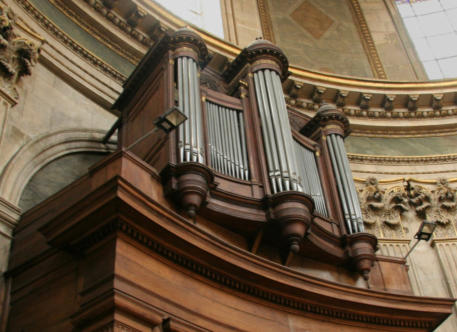

Organiste titulaire
Ewa Lenartowicz
Concerts
Never
Masses with organ
Saturday 7 PM, Sunday 11 PM
Video
-
Photo du buffet Jeroen de Haan
Photo de la console : Victor Weller
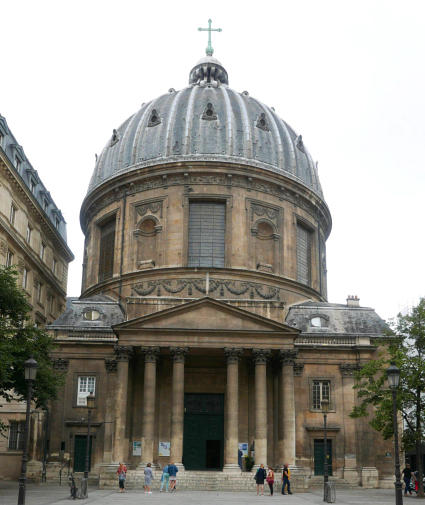
This church was built between 1670 and 1676 by the
architect Charles Errard. Trained in Rome, he was very
inspired by the Italian style, then in vogue.
Transformed into military barracks during the French
Revolution, the church was awarded to the Polish
Missionin 1844 by Bishop Affre . It is currently the
main Polish church in Paris.
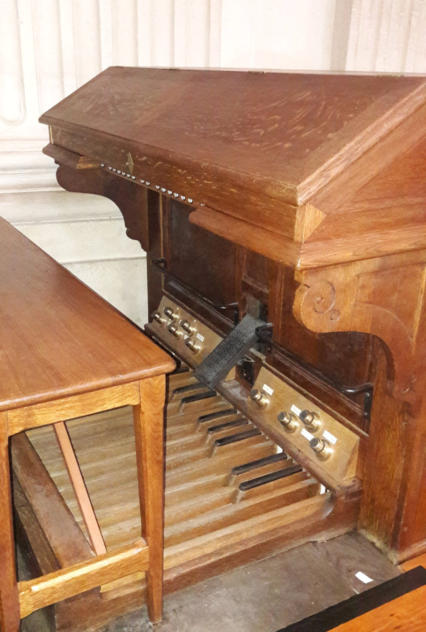
E6
The organcase dates to 1770-1780 and is of unknown ori
gin. It was either the positif of a 16 foot organ, or the case
of a small organ of 8 foot. The instrumental part was built
by Cavaillé-Coll in the end of the XIXth century.
In 1970 Gonzalez changed the stoplist and revoiced and
electrified it.
The organ was restored in 2018 by Bernard Dargassies:
•
Restoration of the Cavaillé-Coll wind chests
•
Replacement of the transmission by a new multiplex,
which allowed the addition of ‘octaves graves’ and
‘octaves aigues’
•
Restoration of the Herman machines of the keyboard
traction
•
Repair of the console with replacement of the pulls of
the stops and installation of a Setter mechanism
•
Replacement of the Flûte 4 and Quarte 2 by a Flûte
Octaviante 4 and a Octavin 2, adaptation of the
Cromorne, the Plein Jeu of Gonzalez
•
Derivation of the Bourdon 16 of the Pedal to the GO,
extension into a Bourdon 32 (Quinte 10 2/3).
A reconstruction of the Swell of Cavaillé-Coll (Gambe 8,
Voix Céleste 8, Cor de Nuit 8, Flûte Octaviante 4, Basson-
Hautbois 8, Trompette 8, Clairon 4.) was discussed, but
the sister-organist preferred to keep a stoplist allowing
more variety of stops.
Many thanks to Mr Bernard Dargassies for this information.
189x - Cavaille-Coll (1)
1970 - Gonzalez (3a)
1981 - Sebire/Glandaz (3b)
2018 - Dargassies (3a)
II/17 (15) - electrical traction -
stoplist
Organs of Paris
ORGANS OF PARIS © 2024 Vincent Hildebrandt ALL ORGANS
E6
The organcase dates to 1770-1780 and is of unknown ori
gin. It was either the positif of a 16 foot organ, or the case of
a small organ of 8 foot. The instrumental part was built by
Cavaillé-Coll in the end of the XIXth century.
In 1970 Gonzalez changed the stoplist and revoiced and
electrified it.
The organ was restored in 2018 by Bernard Dargassies:
•
Restoration of the Cavaillé-Coll wind chests
•
Replacement of the transmission by a new multiplex,
which allowed the addition of ‘octaves graves’ and
‘octaves aigues’
•
Restoration of the Herman machines of the keyboard
traction
•
Repair of the console with replacement of the pulls of
the stops and installation of a Setter mechanism
•
Replacement of the Flûte 4 and Quarte 2 by a Flûte
Octaviante 4 and a Octavin 2, adaptation of the
Cromorne, the Plein Jeu of Gonzalez
•
Derivation of the Bourdon 16 of the Pedal to the GO,
extension into a Bourdon 32 (Quinte 10 2/3).
A reconstruction of the Swell of Cavaillé-Coll (Gambe 8, Voix
Céleste 8, Cor de Nuit 8, Flûte Octaviante 4, Basson-Hautbois
8, Trompette 8, Clairon 4.) was discussed, but the sister-
organist preferred to keep a stoplist allowing more variety of
stops.
Many thanks to Mr Bernard Dargassies for this information.
Organiste titulaire
Ewa Lenartowicz
Concerts
Never
Masses with organ
Saturday 7 PM, Sunday 11 PM
Video
-
Photo du buffet Jeroen de Haan
Photo de la console : Victor Weller
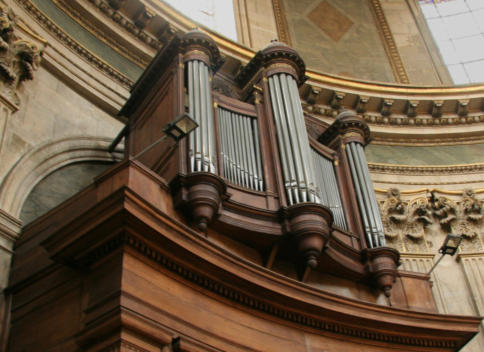
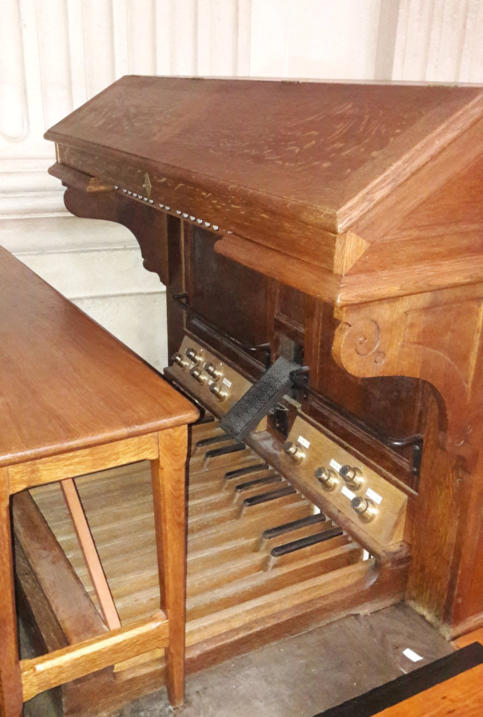
189x - Cavaille-Coll (1)
1970 - Gonzalez (3a)
1981 - Sebire/Glandaz (3b)
2018 - Dargassies (3a)





















